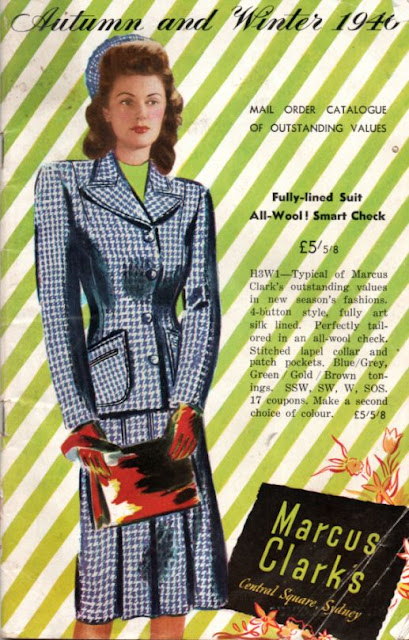I found this little mail-order catalogue from a Sydney department store on eBay. It's a tiny little thing—postwar shortages still existed!—about digest size and with just over sixty pages to advertise household goods of all kinds. Of course a good few of these pages were dedicated to women's clothing.
On the cover, a four-button women's suit in houndstooth checked wool.
Inside the front cover: more suits in Donegal tweed (left) and wool serge (right). These suits still look very like their wartime counterparts, with broad shoulders and short narrow skirts.
A box coat in all wool tweed. "Dog's Tooth Checks are back," says the description. Presumably the more elaborately patterned weaves were abandoned for the duration.
More coats—a wrap coat in cherry boucle cloth (left) and a box coat in checked wool (right). The broad shoulders are a selling point in the descriptions of both garments.
Separates! A woollen blouse is paired with a striped woollen skirt at left, and a tailored woollen jacket with skirt in herringbone worsted at right.
There are some postwar features in these dresses: the dress on the left has a flared skirt and trim on the yoke. The dress in the centre likewise has a flared skirt, and the dress on the right is "in a new style... with... frills and roules bind." The square shoulders are still very much in evidence however.
In larger sizes: a coat and a dress in "up-to-the-minute" styles. Once again there are few changes from the war years (the description points out the rever collars) and the broad shoulders are still a feature.
There's one last thing to note: since clothes were still rationed in Australia in 1946, all these garments are priced not only in money, but in ration coupons as well!























